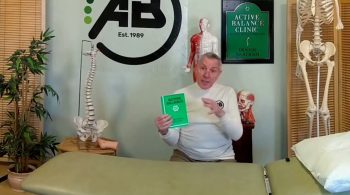Nutrition Recommendations
“What are the healthiest foods?” The latest nutrition recommendations – one chapter on nutrients that needs to be reduced. But when they say things like reducing the intake of solid fat (main sources of saturated and trans fatty acids), what does it mean in terms of which foods to cut exactly? Also, there is one chapter on which nutrients we should increase, so-called nutrient deficiencies. But when it is said, for example, that we need more magnesium, what does this mean in terms of actual food? Let’s look at 20 different types of foods to find out based on the criteria of the government’s recommendations which foods are the healthiest and which are the least healthy. To illustrate, they will use the traffic light system as the UK targeting system, which attributes colors to different things, green means allowed, yellow or amber means attention, and red means stop and think before you put it in your mouth.
The added sugars are easy. Anyone can tell where the sweet and the soda stand, but there are often surprising levels even in salty snacks and snacks, like the Ritz crackers I use as an example for breakfast. The five biggest offenders are major soda, donuts, Kool-Aid, ice cream and candy. The following Nutrition Recommendations is calorie density, calories per serving, where fat joins dessert and processed snacks are the most harmful, although eggs, fish, nuts and seeds, chicken, other types of meat or soda can not be considered low in calories. The top five sources of calories in the diet of Americans are mainly desserts, bread, chicken, soda and pizza. Can You Know Where Cholesterol Is Contained? Desserts, dairy products, eggs, fish, chicken and other meats. The number one is undoubtedly eggs, but then the chicken contributes more to high cholesterol for the American diet than beef, then there are cheese and pork. Here are foods that are high in saturated fat, coming from dairy products, dairy products, donuts, dairy products, chicken.
Salt levels are highest with meat for lunch and snacks, but Americans get the most sodium from bread, chicken and pizza. About half of our food groups have trans fats, whether naturally or artificially added or created. Cakes, cookies, crackers, pies and donuts are number one, then animal products, margarine, french fries, chips and microwave popcorn. Now let’s move on to the nutrients. Green is a high source, pale green is a medium source, and white is a poor source of calcium, fiber, magnesium, potassium, Vitamin A, Vitamin C, Vitamin D, Vitamin E and Vitamin K. Okay, I know that was a little quick. Let’s put it all together. Okay, now these are nutrients, usually for 100 grams, about three and a half ounces, but this is not how our body monitors what we eat. The body’s food unit is calories, not grams. Our body monitors how much energy we eat, not how much weight, the weight of the food. We only have about 2000 calories in our calorie bank to spend every day, so to maximize your nutritional purchase, nutrition recommendations you would like to eat foods with the highest nutrient content. So I just changed this from nutrients per gram to nutrients on calories.

So this table actually expands to the right, hundreds of extra bright green columns, capturing all phytonutrients contained in whole plant foods, but largely missing from processed and animal foods. There are hundreds more white columns here in the middle with a few green tiles far to the end. And the lack of disease-preventing compounds, can be combined with the presence of disease-promoting compounds. So that’s why people who eat more plants, after all, there is usually a more nutrient-dense diet, which comes closer to current nutrition recommendations. And the more plant-based our diet is, the obviously better.
As found on Youtube







